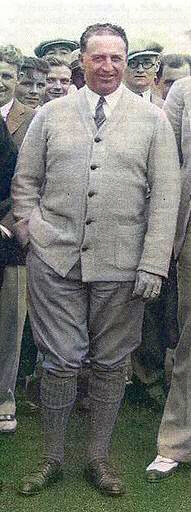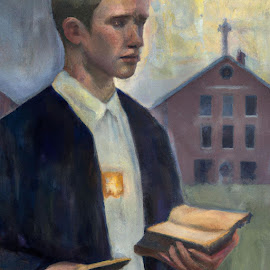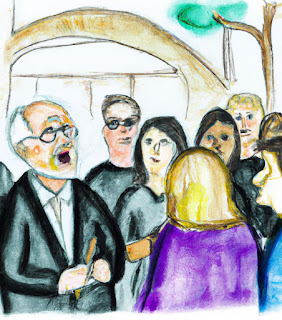
A century ago, Jack Taylor's capital investment and persuasive charm propelled St. Pete's West Side into the Florida land boom.

|
| Jack Taylor |
There will never be a statue erected in his honor ‒ or a street or park named for him. He is all but forgotten, yet his monuments are all around us. Pasadena's brick paved streets, dozens of Mediterranean revival homes, Stetson University College of Law, the Pasadena golf course, the ruins of the Bear Creek Gateway ‒ and many of the historic homes and buildings in the Jungle area ‒ owe their existence to Jack Taylor's grandiose vision. His dreams of an aristocratic resort community were dashed when the land boom ended. Four years after arriving in St. Pete, his Pasadena-on-the-Gulf project was bankrupt.
As of 1916, Ivan Marshall Taylor had an impressive biography.
● married Mar, 13, 1908 to Phyllis E. Toner
● entered business life as newspaper writer
● 1896 private secretary to Gov. Charles A. Busiel of NH
● 1899 Pettingill & Co, Boston. Advertising
● started firm of I. M. Taylor & Co, Boston, a conservative investment business
● member N. Y. Stock Exchange, Chicago Stock Exchange and Boston Stock Exchange; Brac-Burn Country Club, Wellesley Country Club, Belmont Spring Country Club, Boston Art Club; Ancient & Honorable Artillery Co.; 32d degree Mason
● offices. 115 Broadway, New York and 8 Congress St, Boston.

The World War. Eat More Fish.
The U.S. declares war on Germany on April 2, 1917. A campaign by the Department of Commerce encourages people to eat more fish.

East Coast Fisheries is thriving thanks to an increase in fish consumption. In September 1918 the company's largest trawler, the Kingfisher, is torpedoed and sunk by a German U-boat. The crew of 26 survives. I.M. Taylor, company president, announces that the boat was insured and business will continue as usual. Despite the setback, his companies prosper.
In 1920, the Department of Commerce sends Taylor to Europe to learn how to increase fish consumption here. When he returns, he expands East Coast Fisheries by adding more trawlers and further modernizing the fishing, canning, preserving and transporting operations.
Drowning in Debt
In spite of efforts to increase its popularity, eating fish continues to be regarded by many as a sacrifice (for both the war effort and for Catholics who refrain from eating flesh meat on Friday).
Unable to pay employees and creditors, East Coast Fisheries goes into receivership. It is hoped that the company can recover in a few months. The brilliant engineer of the Panama Canal project and one of the most respected men in America, Brigadier General George Washington Goethals, is named president of the company, but despite his best efforts, the man who successfully directed one of the most difficult engineering projects in world history cannot untangle the financial mess.
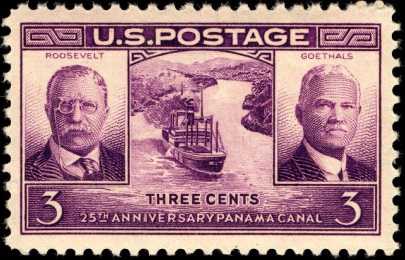
In the end, the company is sold in parcels for pennies on the dollar. I.M. Taylor & Co is caught in the undertow, its reputation irreparably damaged. With his companies failing, Taylor flees to Europe taking a large portion of the remaining assets. Irate shareholders sue him.
City Slicker. Fishy Background.
After the 1921 trip to Europe, I.M. Taylor makes his way to Florida during the early stages of the land boom. He has enough capital to start a new business. The Florida land boom will provide Taylor an ideal opportunity to put his failures behind him and reinvent himself.
 |
| The amusement park at Hollywood-by-the-Sea. |
As Walter P. Fuller tells it, Jack Taylor presented Evelyn as the financial head of the $500K land deal. It was Evelyn Du Pont Taylor who pulled seven $10,000 bills from her stockings for the down payment (she only needed one of those, but it was made certain that everyone in the room saw the other six bills). The paperwork is signed E.C. Taylor (Evelyn C), not I.M. Taylor. The performance is successful in branding the Du Pont name and reputation on Pasadena-on-the-Gulf.
Evelyn DuPont: Blue Blood or Blue Collar?
In St. Petersburg, it was accepted that Evelyn was a Du Pont, but ancestry records show she was born into the working-class Bowden family in the fishing town of Bucksport, Maine, and was in no way related to the DuPont family. Prior to posing as a Du Pont in 1922, she listed her maiden name as Bowdoin on her 1918 marriage certificate ‒ Evelyn is not related to the Bowdoin family either.
Will the Real Evelyn DuPont Please Stand Up?

|
| 1921 Passport Photo |
The amount of detail in this analysis of Evelyn's ancestry has never before been published in print or digital media.
Some of he following information appears in a previous post:
Handsome Jack Taylor was the Catalyst for the Jungle's Building Boom
Publisher's note: Since the primary focus of this blog is the Jungle area, the following article was written with an emphasis on Taylor's impact on the Jungle.
Pasadena-on-the-Gulf developer "Handsome Jack" Taylor's positive impact on St. Petersburg and the Jungle neighborhood is not fully appreciated by local historians who tend to view him as a con man (which is true), eager to make a quick buck and then get out of town. But without his involvement, it is questionable whether the Jungle Prado building (later called the Jungle Prada building), Jungle Country Club Hotel and dozens of attractive homes would have been built in the Jungle and Pasadena neighborhoods. The building boom of the Roaring Twenties might have passed us by.
In March 1922, Taylor made a big investment that funded much of Walter P. Fuller's developments that began shortly thereafter. Taylor brought money, enthusiasm, planning, charisma and a work ethic to St. Petersburg and especially to Pasadena-on-the-Gulf. His successes and capital investment influenced Walter P. Fuller and his partners to move forward aggressively and build the Jungle Hotel, Piper-Fuller Airfield and Jungle Prada building, and also inspired many of the grand homes in the neighborhood.The fact that there was a Roaring Twenties history in the Jungle was dependent on a long line of optimistic and determined men. Most of them were from the north. From Philadelphia came Hamilton Disston, Jacob Disston, F.A. Davis, Charles C. Allen and John Allen. Al Lang was from Pittsburgh, Jack Taylor from New York City.
Taylor Syndicate Buys 1800 Acres South of the Jungle
Taylor bought 1800 acres (2.81 square miles) of land south of the Jungle in 1922 and renamed the area Pasadena-on-the-Gulf. The territory included Davista and the west side of Gulfport.
Taylor had a shady background. As an investment banker, he had profited from dishonest stock market deals. He was a Yankee from New York City, while the other four St. Petersburg land boom giants (C. Perry Snell, Charles R. Hall, Walter P . Fuller, and N.J. Upham) all lived in St. Petersburg. Taylor burst onto the St. Petersburg real estate scene with marketing skills and enthusiasm that were foreign to the other land boom giants who were striving to catch up with the successful developers in south Florida.
1920's Florida Land Boom
The 1920's Florida land boom began in Miami when Carl Graham Fisher built the Flamingo Hotel and began a national advertising campaign promoting Miami Beach real estate. In 1921, property developer George Merrick created the planned community of Coral Gables, west of Miami, and began promoting and selling lots. Land values began to rise and other communities sprang up in southern Florida.

|
| Postcard: The Venetian Pool at Coral Gables |
In St. Petersburg, real estate values increased slowly between the end of World War I until the winter of 1922-23. Already trailing south Florida in the land boom, the 1921 Tampa Bay hurricane tempered enthusiasm for local properties.
Historians agree that the boom in St. Petersburg started in 1923 in the neighborhood near the foot of the new Gandy Bridge. Suddenly the real estate market surged and continued a wild run until 1926. During the boom, many beautiful buildings and homes were built in St. Petersburg, including the Jungle Hotel (1926) and the Jungle Prada building (1924).
From 1923 to 1926, land values rose precipitously in St. Petersburg. Most of the buyers were from northern states, many of them never visited the land they bought ‒ their purchases were handled by mail or through agents. With rapidly rising property values, a parcel of land could be bought and sold for a profit, sometimes multiple times in the same day.
Taylor Wanted a Piece of the Land Boom Action
Early in 1922, "Handsome Jack" Taylor saw the trend in Florida. St. Petersburg land values were rising but the city was still recovering from the 1921 hurricane, so the boom had not started. Taylor found land along Boca Ciega Bay in Davista and Gulfport ‒ just south of the Jungle ‒ some of which had already been mapped by a professional city planner in 1916 when H. Walter Fuller owned the land. The Taylor Syndicate purchased 1,800 acres (2.81 square miles) in March, 1922.
click on image to enlarge

|
| Pasadena-on the-Gulf (north section) Pinellas county Plat book 4, Page 60 (officialrecords.mypinellasclerk.org) |
Background
In 1914, H. Walter Fuller had big plans for developing his land in the Jungle and Davista, but the war economy ravaged his businesses and by 1917 he and his companies were insolvent. Rather than go into bankruptcy, Fuller assigned all his assets to a committee of bankers in Philadelphia.
In 1919, George C. Allen, a member of the committee, negotiated an arrangement advancing one million dollars to H. Walter Fuller and his son, Walter P. Fuller, to re-acquire the old Fuller companies on a partnership basis.
The post-war economy was picking up steam and before long each of the three partners prospered and the Fullers were able to pay back the advance. But by 1922, the partners found themselves with too much unsold land ‒ many of their properties were facing tax lien foreclosure. The $500K deal with the Taylor Syndicate resolved the deficit and provided the partners with working capital.
The very next year, the Allen-Fuller Corporation was formed. It was capitalized with money from the land sale. The Allen-Fuller Corporation would go on to purchase the Jungle Golf course from private investors and build the Jungle Prada building, Piper-Fuller Airfield and the Jungle Country Club Hotel.
Pasadena-on-the-Gulf
Taylor announced that he would rename his community Pasadena-on-the-Gulf. There would be a golf course, school, railroad station, chapel, elaborate homes, and well-paved streets and parkways. As Jack Taylor described it, "an aristocratic resort community."By the end of 1922, Taylor was advertising lots for sale in his premier community. Next, he landed the world's foremost professional golfer ‒ Walter Hagen ‒ to be president of his new Pasadena-on-the-Gulf country club. Taylor began building roads and homes and beautifying the community. There was a grand hotel, an aviary and a plant nursery. Walter Hagen designed the golf course which included canals for canoe spectators and an island full of monkeys.
1925 Editorial: Jack Taylor Has Done the City Inestimable Good
The opening of the magnificent new offices in the Taylor arcade recalls the wonderful progress Pasadena has made in the last four years. In that short period Jack Taylor, president of Pasadena Estates. has built a new community within the city limits of St. Petersburg—a community with miles of paved and parked streets, scores of costly homes, two hotels, a golf course and clubhouse, and one of the largest nurseries in the South. Not only has Mr. Taylor made Pasadena, but in so doing he has hastened the development of the entire western section of St. Petersburg and through his confidence in the future has done the city inestimable good.
‒ St. Petersburg Times, Dec 11, 1925.
Local historians assert that Jack Taylor left town abruptly in 1926, never to return, but here is evidence that he was still considered a "congenial dinner host" in 1928 at a banquet at the hotel that he built:
As the land boom was ending, Taylor confided to Walter P. Fuller that he had millions of German marks stashed away and that he would be a wealthy man when the marks returned to their legal value. Once again, Jack's optimism was unfounded and a German mark became as worthless as a share of East Coast Fisheries stock.
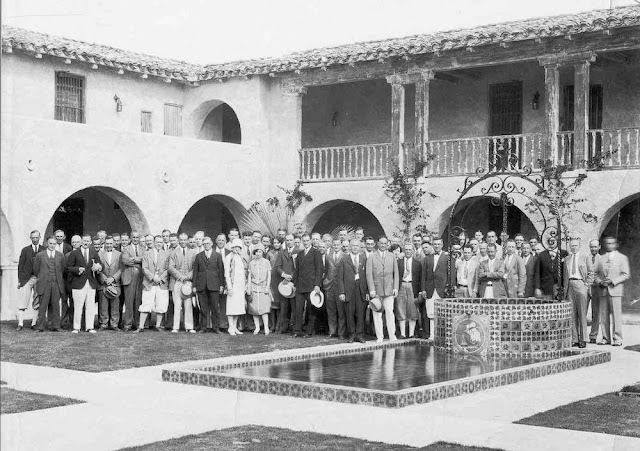 |
| Jack Taylor (center, white pants) with a little help from friends at the Rolyat Hotel. Credit: Stetson University |
In 1953, Fuller writes "it transpired that Taylor, a few years ago dropped dead one day in a famous New York department store where he had been a floor walker for several years, handsome, imperial, polished and poised to the last breath."
Fuller's account sounds about right, but there is nothing to support it. There are no obituaries to be found for this man who led such an extraordinary life and was a friend to many celebrities.
A more plausible biography is found on ancestry.com. It finds that Ivan Marshall Taylor died at age 69 in Stoneham, Massachusetts in 1943. His last known address was a Boston rooming house. I wonder if any of his fellow roomies believed the fantastic tales that the crazy old man told about the grand hotel that he built and his adventures with the celebrated elite of the Roaring Twenties.
I.M./Jack Taylor was a victim of optimism and the unpredictable ups and downs of the early twentieth century economy. He was president of three large companies that were initially successful, but failed spectacularly ‒ I.M. Taylor & Co, East Coast Fisheries Co and Pasadena Estates.















